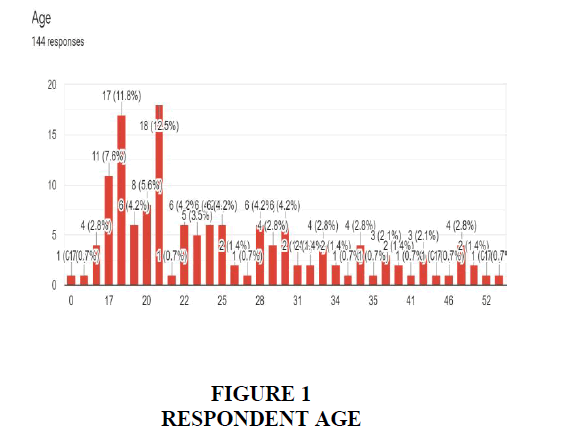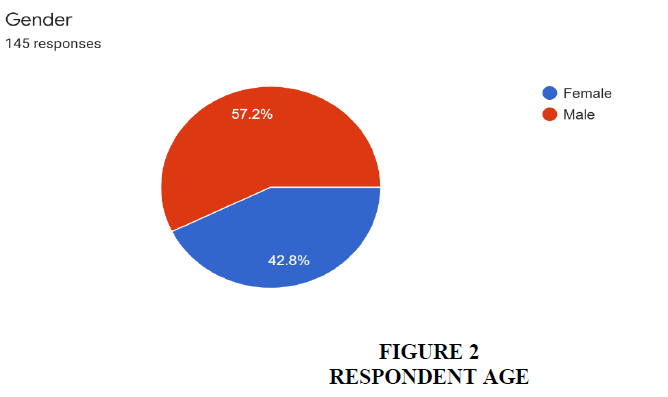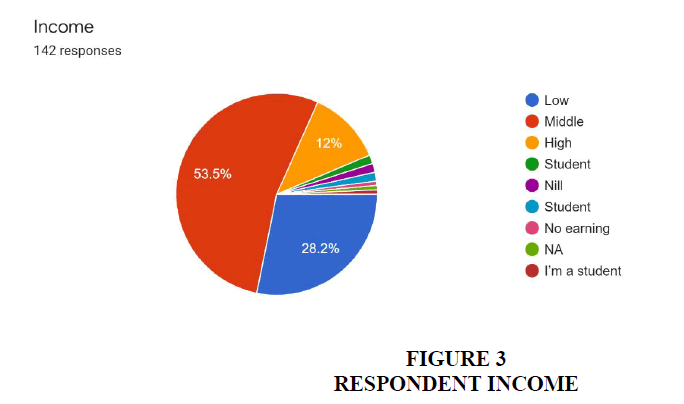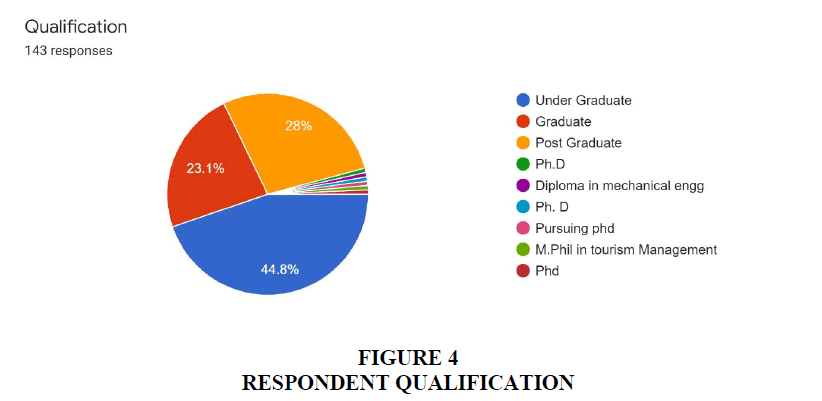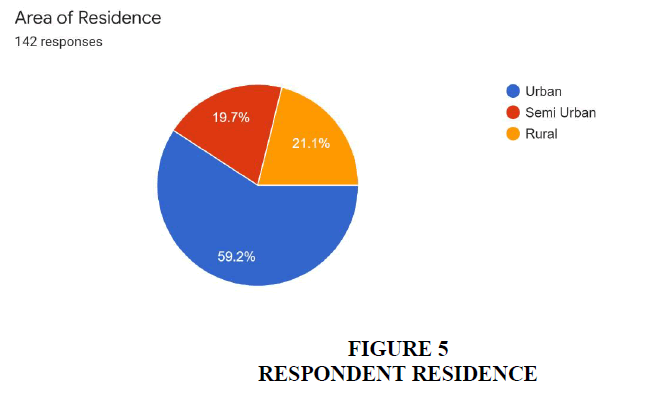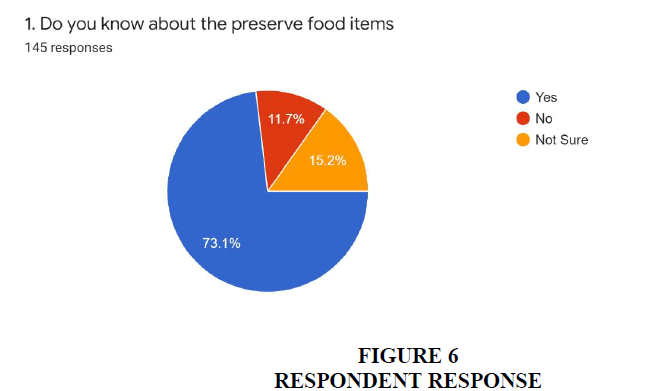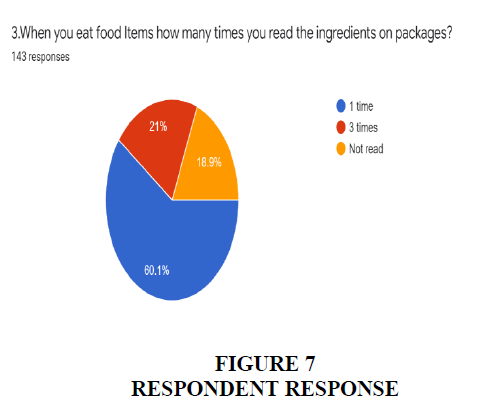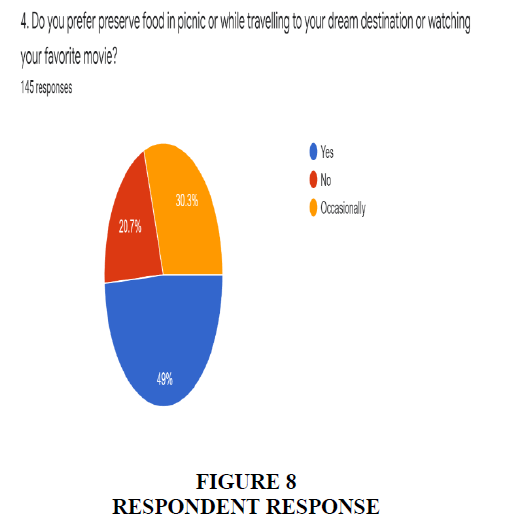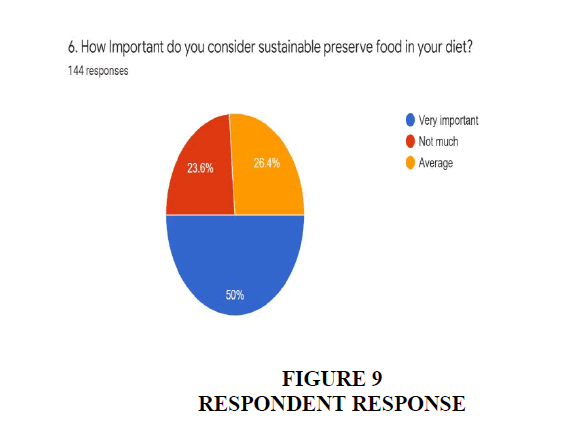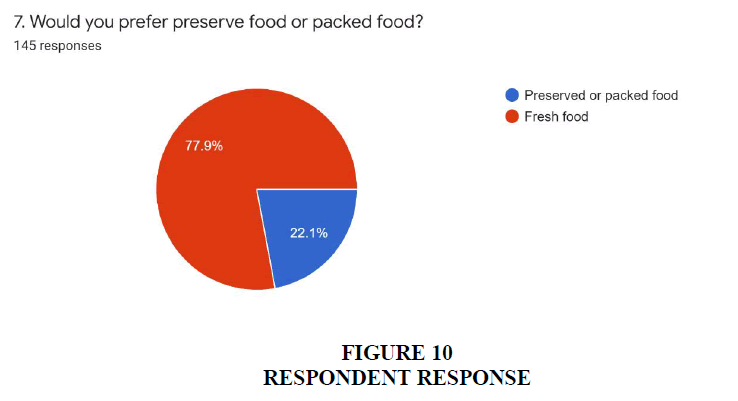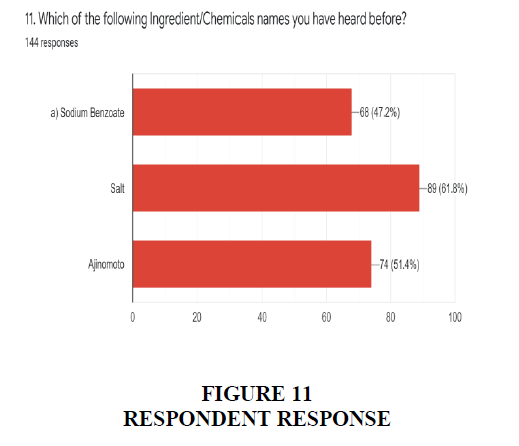Review Article: 2024 Vol: 28 Issue: 1S
Sustainable Food Consumption: An Assessment of Food Quality and Satisfaction of Consumers as Compared to Conventional Food in Punjab Region an Empirical Study
Aravind Kumar Rai, Manipal University Jaipur
Bakul Govil, Lovely Professional University, Jalandher, Panjab, India
Siddhartha Dey, Chandigarh University
Mukesh Shekhar, Manipal University Jaipur India
Anmol Mehta, Manipal University Jaipur, Jaipur
Citation Information: Kumar Rai, A., Govil, B., Dey, S., Shekhar, M., & Mehta, A. (2024). Sustainable food consumption: an assessment of food quality and satisfaction of consumers as compared to conventional food in punjab region an empirical study. Academy of Marketing Studies Journal, 28(S1), 1-11.
Abstract
Sustainable tourism has gained in popularity as a field of study since the late 1980s. On the other hand, the debate over sustainable tourism is fragmented, confusing, and riddled with wrong assumptions and arguments. This study aims to identify packaged sustainable food and measure consumer knowledge and purchase intent in Delhi and the National Capital Region. People in nations like India are witnessing a paradigm shift in their socioeconomic standing as a result of globalization and economic liberalization. This is reflected in their way of life, eating habits, and food culture. Diet-related disorders such as malnutrition and obesity have become common as a result. Unsustainable food consumption is a major contributor to serious health problems. Food packaging plays an important function in the reorganization of nutritious foods for clients in this regard. Food packaging enhances the shelf life of goods while also reducing food loss during transit, distribution, and storage. Unsustainable food packaging contributes to a variety of environmental problems, including the development of solid waste. As a result, bad foods and packaging come at a cost to both human health and the environment. The current analysis demonstrated the critical need for food and food packaging sustainability as a result of these issue newline the research was split into two parts. To establish the concept of packaged sustainable food, qualitative descriptive research was undertaken in the first step. The acquisition of primary data for an empirical investigation was the focus of the second phase. The study's second component looked into consumer sustainability awareness is critical. On the other hand, sustainable food labels are critical in recognizing packaged sustainable foods. It also has a big influence on customer purchasing intent. “The role of tourism demand, the nature of tourism resources, the importance of intra-generational equity, the role of tourism in promoting socio-cultural progress, sustainability quantity, and sustainable progress forms. Finally, it is suggested that a systems approach is required to elevate sustainable tourism research to a higher scientific level.” McDonald, Merry-Lynn & et all. (2013). “As they examine the links between health and tourism, researchers are becoming increasingly interested in health issues related to international tourism. Despite the growing popularity of the subject, Reisch, L., Eberle, U., & Lorek, S. (2013). no major tourist journal has yet to publish a complete research study on the subject. This article examines a dimension of tourist health that has traditionally been overlooked in research on travel medicine: tourist accidents.” Gomiero, T., Pimentel, D., & Paoletti, M. G. (2011) Sustainable food consumption will analysis through a survey and some questionnaires.
Keywords
Sustainable, Literature, Approach, Accidents, Compensation.
Introduction
The growth of "alternative" food networks and a resurgent interest in traditional and regional specialties have been related to initiatives to boost tourism and agriculture's economic and environmental sustainability.
Despite the negative effects of tourism and travel patterns on the environment, this essay argues that there is a compelling case for sustainable food tourism. This, however, necessitates the creation of well-designed, environmentally friendly dining experiences. To give some universal examples, we must remodel and rethink the core concept of the food experience, focusing on participation, the role of the consumer, food design accessibility, and local context possibilities. This isn't to say that eco-friendly food tourism is or will be carbon neutral. It means that a food designer's responsibility is to create climate-friendly solutions and that sustainable food experience designers, maybe, more importantly, should think about how to motivate people to be more environmentally conscious.
“Agricultural sustainability was not a big worry in the 1960s and 1970s because overuse of food production resources did not appear to be threatened. In the 1960s, the primary concern was averting the global starvation predicted by doomsayers. Following the discovery of the greenhouse effect, scientists realized that slash-and-burn agriculture, which destroyed tropical forests, was a major source of carbon dioxide. Agricultural sustainability has become even more important as a result of several critical concerns. One of them is the population situation. The other is an acknowledgment that most uncultivated land should not be farmed and that people should not simply go in and start cutting and burning forests as they have in the past.” Gomiero, T., Pimentel, D., & Paoletti, M. G. (2011).
“The environmental impact of new farming methods is explored. Soil loss (along with soil fertility), rising water demand from agricultural practices, and contamination from heavy use of agrochemicals are all severe concerns to agriculture's long-term survival. Biodiversity loss due to land-use change and greenhouse gas emissions from agricultural activities are also major concerns. Alternative agricultural practices exist to help reduce the use of natural resources, limit inputs, and conserve soil fertility and biodiversity, all of which can help agriculture become less environmentally harmful.” Tugault-Lafleur, C. N., & Black, J. L. (2019)
“Local food may play role in sustainable tourism by appealing to visitors' desire for authenticity while on vacation, according to research from the Lake District and Exmore in the United Kingdom. Based on information from qualitative interviews with tourists and food producers, the study underlines how local meals are perceived as "authentic" products that express the place and culture of the destination.” Zulfiqar, F., Navarro, & et al. (2019)
The study claims that "local food" can enhance the visitor experience by connecting customers to the region and its perceived culture and legacy, challenging standard understandings of locality and authenticity, and proposing a new approach to tourism research. This paper aims to provide a quick assessment of sustainable tourism research, with thanks to various authors for their contributions to the growth of tourist research. However, it is not intended to be a critical assessment of the literature in general; rather, it is a personal meditation on the tourism and sustainability dilemma.
Typical concerns include: No two challenges that hospitality professionals confront are the same. Situations, conditions, location, unit type, guests, distance from the unit, security, and health provisions all influence them. Nonetheless, the majority of issues in any hospitality organization can be divided into two categories:
1. Issues that could emerge in any similar company.
2. Unpredictable issues that can occur at any time.
The vast majority of people fall into one of the two categories stated above. This isn't to argue that problems, which can be overly individualistic, don't arise outside of the aforementioned groups. Many tourists want hospitality units to resolve all of their personal, emotional, and other concerns, which is a tall order.
Nonetheless, real efforts might be made to aid travelers who are away from home and legitimately require assistance. Their rudeness and attitude may be a cover for their powerlessness. Changing the employee count Another challenge that this industry encounters is personnel relocation, which might cause the unit to temporarily suspend operations, resulting in devastating results. According to studies, employees who contact firm executives who own their hospitality enterprises are always keen to make offers to highly skilled staff. ? According to research, the hotel business has one of the highest employee turnover rates in the world. But what precisely is employee turnover? Generally. Hoteliers are fully aware of this costly issue. Critical information is lost when staff leaves and departing employees may be followed by guests. Furthermore, training a new employee to perform at the same level as the one you've lost costs time and money. Hoteliers actively search out ways to retain people, according to Protel. CCTV has a long-term competitive advantage. Although complete eradication of the problem is not possible, he believes that a variety of intelligent ways can save the company money.
Literature Review
Recent tourist study has focused on food tourism, sometimes known as food and tourism. The fundamental concepts linked with food tourism are highlighted as major study subjects, viewpoints, and disciplinary approaches in this book, which critically studies and evaluates this new topic field of tourist research. According to this study, the five themes that dominate the literature on food tourism are motivation, culture, authenticity, management and marketing, and destination orientation. The authors employ a cultural anthropological approach to food tourism research since much of the literature on the subject shows cuisine as a site that is used in several ways and interactions with tourists.
The crisis lifecycle has been transformed into a tiered method of crisis management, according to Coombs (2011). As a result, crisis models that are based on the crisis lifecycle can be classified as phased approaches. Crisis models based on a strategic perspective can be classified as a strategic approach, according to Huang et al. (2008).
According to Evans and Elphick (2005), crisis management solutions, particularly strategic approaches, in the tourism business are difficult to apply. According to Hall et al. (2004: 2), SARS was not only spread internationally via modern aviation services, but it also caused several countries to issue travel advisories, culminating in a tourism and hospitality economic disaster.
“It is critical to maintaining sustainable food and cooking processes. Every day, the population expands without limit, while official restrictions try but fail to control it. As the population expands, so do the demands on resources.”
To maintain soil fertility and boost crop output and quality, nutrient fertilization is essential. Precision nutrient management is a major challenge around the world since horticultural crops rely significantly on chemical fertilizers. Traditional fertilizers are not only costly to farmers, but they also have the potential to harm people and the environment. This has sparked a search for environmentally friendly fertilizers, particularly those that use nutrients efficiently, with nanotechnology appearing as a viable answer. Because of their huge potential for boosting nutrient utilization efficiency, nano fertilizers can aid in nutrition management”.
Chemicals, fertilizers, and high-tech machinery are all employed. Former employs this method regularly. To increase the number of their products in a short period, they use fertilizer and chemicals. Farmar’s some vegetables that can be grown are potatoes, tomatoes, onions, cauliflower, cabbage, mushrooms, beans, carrots, and brinjal.
Loki, Sita phal, and a variety of lentils, including moong, Masur, channa, Malka, and other oranges and apples. As a result, the nutritional value has decreased. Brunsø, K., Grunert, K. G & et all. (2002).
”Several studies have shown that the definition of quality depends on the perspective from which it is assessed: a definition in technical and industrial terms may differ from the consumers' perception. (2000) Several consumer-related factors Define food quality: intrinsic extrinsic elements including taste and organoleptic features origin, labelling.” Pham, M. T., Jones, & et al. (2010).
“Total Food Quality Model defines quality as abstract and multidimensional, with four interrelated dimensions: hedonics, health, convenience, and production method.
Quality evaluation differences affect consumer behaviour, beliefs, attitudes, and product information use and search. Quality expectations affect nutrition, food preparation, and shopping.” Aprile, M. C., Caputo, V., & Nayga Jr, R. M. (2016)” Safe, high-quality food has grown in popularity. Rapid economic expansion and food supply chain changes have heightened food quality interest.
Consumers link food quality with safety. A recent study on food quality and safety indicated that people consider high-quality food as safe.” Verbeke, W., & Ward, R. W. (2006). “International regulations have been introduced to ensure the quality and safety of products, including ISO 9001 (International Organization for Standardization) standards and the HACCP (Hazard Analysis Critical Control Points) system.” Guerrero, L., et al. (2009) Consumers infer food quality through search, experience, and credence. Even after using a product or manufacturer, consumers can't determine its credibility. Search, experience, and credence help consumers infer food quality. Consumers can't judge a product or manufacturer's credibility after utilising it. Margabandhu, & Saravanaraj (2014).
Consumers increasingly base their decisions on personal trust. In Italy, a product's quality typically depends on local productions or cuisine. AbuKhalifeh, & Som, (2012). Local food is viewed as having several benefits, from the enjoyment of savouring a homemade authentic food product to enhancing the food system's sustainability, reducing the carbon impact, and providing new market options for local farms Ryu, et al. (2012). Satisfaction overview Customer satisfaction is an important topic for researchers and organisations to investigate to improve results and customer interactions to boost market reputation. Relationship pleasure drives customer retention. Important food service clientele. Each business must please customers. Good customer service helps organisations flourish and grow. Hoteliers must satisfy customers. Guest care influences GDP.
Objectives of the Research
The overall purpose of this study is to develop the concept of packaged sustainable food and assess consumer awareness of sustainable food production, consumption, and packaging attributes based on information and knowledge using relevant indicators among consumers in the Punjab Region.
The specific objectives are as follows:
1. Determine customer awareness and intent to purchase sustainable food production, consumption, and packaging.
2. To see how customer knowledge and purchase intent for packaged sustainable foods are affected by socioeconomic level (SEP).
3. Establish a link between consumer awareness of packaged sustainable foods and purchase intention.
Research Methodology
The research design is a deliberate, multi-step technique for addressing the study topic. It lays out a detailed strategy for achieving the study's overall goal. The validity of any study is determined by the method used to collect data and analyze it logically and sequentially. This investigation, which was split into two halves, incorporated both primary and secondary data. In the first step, qualitative research is used to answer the study's "original objective."The first phase focuses on objective knowledge, research questions, and operational definitions for measurement variables. As a result, previous literature on 97 sustainability, sustainable food, and sustainable packaging was thoroughly examined. The core research concept of packaged sustainable food was developed using the facts and knowledge collected from earlier investigations. The second part of the study focuses mostly on empirical-analytical research based on the first phase's research hypothesis. The remaining objectives will be handled in this phase. The next sections talk through the numerous strategical methods employed to perform the second phase of the investigation. The investigation's overall design is summarized. The investigation was carried out using the following method: Professors, assistant professors, graduate students, travelers, and educated tourist professionals were interviewed and given questionnaires, and their responses were changed to construct the survey questionnaire “hotel customers focus on two things: food quality and service quality. By employing this technique, a hotel may maintain a healthy connection with guests in terms of satisfaction.” “Customers return to the restaurant because of the food's quality. If food is good, customers will spend more.” “Empirical analysis focused on organic food consumption, as mentioned. Organic food has different connotations for people. Organic foods represent health, pleasure, environmental friendliness, safety, and animal welfare. “Organic food consumption was studied empirically. People view organic food differently. Organic foods are healthy, tasty, eco-friendly, safe, and animal-friendly” Different definitions of healthy eating may affect eating behaviour. According to Ajzen and Madden (1986), norms can only be grasped in context. Subjectivity. This is crucial for health behaviour. Young people's health concerns differ from doctors'. Teens may view dieting and healthy eating as comparable, according to studies (Nichter, 2003; Story et al., 1998). British adolescent girls perceive "dieting" as healthy eating behaviour, according to Roberts, McGuinness, Bilton, and Maxwell (1999). Teens see dieting as eating nutritious meals and avoiding bad foods, according to several researches. Being an adolescent is related with a unique set of essential developmental elements that have an effect on one's eating choices. One of the most transformative times of a person's life, particularly in terms of physical appearance and development, is the teen years.
Preamble
This chapter provides a comprehensive review of previous research. The goal of this chapter is to gain a comprehensive grasp of the research problem and create the groundwork for the packaged sustainable food concept. There are three sections in this chapter. The first segment introduces the study's topic, which causes several debates about food sustainability. The debates begin with the beginnings of sustainability and go to topics such as sustainable farming, a sustainable food system, sustainable food, and food choice. The second portion examines why food products require packaging, how to package them, and what types of packaging materials are currently in use for food. An in-depth examination of consumer knowledge and purchase intent for packaged sustainable food in the Delhi NCR is offered in this chapter. For this objective, a field survey method was employed to collect first-hand information from 144 sample respondents. The data was arranged in a simple tabular style. The sample's respondents are considered dependent variables. The study included gender, age, educational attainment, domicile, occupation, monthly income, and living circumstance as independent variables Figures 1-11.
My study included 144 participants, 57.2 percent of whom were men and 42.8 percent of whom were women. Male reactions to preparing a preserved meal. In their daily lives, men employ a variety of preservative goods, and different companies now offer products with a variety of chemicals and preservatives.
The total number of people who participated in my research work is 144 out of which 53.5% are middle income 12% are high income 28% are low income and 5% are normal.
The total number of people who participated in my research work is 144 out of which 44.8% are undergraduates 28% are postgraduates 23% are graduates and 5% are Ph.D.
The number of people who participated in my research work is 142out of which 59.2% are urban and 19.7% are Semi-urban and 21.2% are rural.
The total number of people are responded regarding the Nutritional value of packed food 73.1% are responded yes 11.7% are responded, No and 11.7% are a responded not sure of the Nutritional value of packed food
The total number of people who responded regarding the Nutritional value of packed food 60.1% responded 1 time. 18.9% are responded, 3times and 18.7% are a responded not sure of the Nutritional value of packed food
According to this tale-8, 49% are preferred packed food for a picnic or while traveling or watching movies. 30.3% are not preferred to take packed food. 20.7% are preferred to take it occasionally.
According to this tale-9, 50% prefer packed food daily 26.4% is average, and 23.6% use sustainable preserved food is not much.
According to this tale-10 77.9% prefer packed fresh food, 22.1% prefer packed food, and preserved foods are getting more popular day by day, today people have money but do not have time, these types of preserved and packed food people easily use to ready to eat.
Results
As a result, a representative response rate was achieved in 144 of the surveys. A total of 144 people were chosen to take part in the poll. A total of 144 people answered my survey, with 28 percent being between the ages of 18 and 21, 32.7 percent between the ages of 21 and 30, and 29 percent between the ages of 30 and 45. My study included 144 participants, 74.5 percent of whom were men and 25.75 percent of whom were women. A total of 100 people took part in my study, with 56 percent living in cities, 32.70 percent in semi-urban areas, and 11.20 percent in rural areas. The overall number of people who said they eat nutritious food daily was 67.3 percent yes, 20.7 percent no, and 13 percent no.
Conclusion
Boys aged 19 to 21 who earn a moderate wage, are students, and live in metropolitan regions are more aware of nutritious food, according to the data. A total of 15 questions were asked. There was a total of 144 responses, which is a big number. People were offered a choice of superfoods, with kiwi, broccoli, and nuts topping the list, followed by blueberries, sweet potatoes, and dragon fruits. 61.4 percent of people buy these fruits, with 42.09 percent buying and utilizing them just sometimes. While 69.6% of people say they are not perplexed while choosing superfoods, 25% say they are, and just a few admit to being perplexed on occasion.
References
AbuKhalifeh, A. N., & Som, A. P. (2012). Guest satisfaction and loyalty in food and beverage service department in the hotel industry. In2nd International Conference on management(Vol. 2, pp. 996-1008).
Aprile, M. C., Caputo, V., & Nayga Jr, R. M. (2016). Consumers’ preferences and attitudes toward local food products.Journal of food products marketing,22(1), 19-42.
Indexed at, Google Scholar, Cross Ref
Black, J. L., Velazquez, C. E., Ahmadi, N., Chapman, G. E., Carten, S., Edward, J., ... & Rojas, A. (2015). Sustainability and public health nutrition at school: assessing the integration of healthy and environmentally sustainable food initiatives in Vancouver schools.Public health nutrition,18(13), 2379-2391.
Indexed at, Google Scholar, Cross Ref
Brunsø, K., Grunert, K. G., & Fjord, T. A. (2002).Consumers' food choice and quality perception(Vol. 77). MAPP, Center for markedsovervågning,-vurdering og-bearbejdning til fødevaresektoren.
Gomiero, T., Pimentel, D., & Paoletti, M. G. (2011). Environmental impact of different agricultural management practices: conventional vs. organic agriculture.Critical reviews in plant sciences,30(1-2), 95-124.
Indexed at, Google Scholar, Cross Ref
Guerrero, L., Guàrdia, M. D., Xicola, J., Verbeke, W., Vanhonacker, F., Zakowska-Biemans, S., ... & Hersleth, M. (2009). Consumer-driven definition of traditional food products and innovation in traditional foods. A qualitative cross-cultural study.Appetite,52(2), 345-354.
Indexed at, Google Scholar, Cross Ref
Margabandhu, S., & Saravanaraj, D. M. (2014). A study on customer satisfaction towards hotel industry in Vellore.Indian Journal of Applied Research,4(2).
Indexed at, Google Scholar, Cross Ref
McDonald, M. L. N., Diaz, A. A., Ross, J. C., San Jose Estepar, R., Zhou, L., Regan, E. A., ... & ECLIPSE and COPDGene Investigators. (2014). Quantitative computed tomography measures of pectoralis muscle area and disease severity in chronic obstructive pulmonary disease. A cross-sectional study.Annals of the American Thoracic Society,11(3), 326-334.
Indexed at, Google Scholar, Cross Ref
Pham, M. T., Jones, A. Q., Sargeant, J. M., Marshall, B. J., & Dewey, C. E. (2010). A qualitative exploration of the perceptions and information needs of public health inspectors responsible for food safety.BMC Public Health,10, 1-9.
Indexed at, Google Scholar, Cross Ref
Reisch, L., Eberle, U., & Lorek, S. (2013). Sustainable food consumption: an overview of contemporary issues and policies.Sustainability: Science, Practice and Policy,9(2), 7-25.
Roberts, S. J., Maxwell, S. M., Bagnall, G., & Bilton, R. (2001). The incidence of dieting amongst adolescent girls: a question of interpretation?.Journal of Human Nutrition and Dietetics,14(2), 103-109.
Ryu, K., Lee, H. R., & Kim, W. G. (2012). The influence of the quality of the physical environment, food, and service on restaurant image, customer perceived value, customer satisfaction, and behavioral intentions.International journal of contemporary hospitality management,24(2), 200-223.
Indexed at, Google Scholar, Cross Ref
Tugault-Lafleur, C. N., & Black, J. L. (2019). Differences in the quantity and types of foods and beverages consumed by Canadians between 2004 and 2015.Nutrients,11(3), 526.
Indexed at, Google Scholar, Cross Ref
Verbeke, W., & Ward, R. W. (2006). Consumer interest in information cues denoting quality, traceability and origin: An application of ordered probit models to beef labels.Food quality and preference,17(6), 453-467.
Indexed at, Google Scholar, Cross Ref
Zulfiqar, F., Navarro, M., Ashraf, M., Akram, N. A., & Munné-Bosch, S. (2019). Nanofertilizer use for sustainable agriculture: Advantages and limitations.Plant Science,289, 110270.
Indexed at, Google Scholar, Cross Ref
Received: 12-Jul-2023, Manuscript No. AMSJ-23-13777; Editor assigned: 13-Jul-2023, PreQC No. AMSJ-23-13777(PQ); Reviewed: 26-Aug-2023, QC No. AMSJ-23-13777; Revised: 02-Sep-2023, Manuscript No. AMSJ-23-13777(R); Published: 07-Oct-2023
